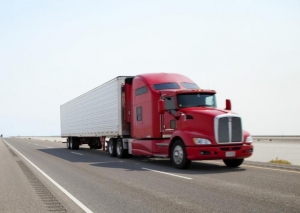
The Commercial Vehicle Safety Alliance (CVSA) International Roadcheck takes place June 5-7 this year with a focus on Hours of Service compliance. This will be part of a Level I, 37-step inspection process.
During last year’s inspection blitz, more than 62 thousand inspections were conducted over three days. Approximately 15 to 20 percent of all vehicles get put out of service for vehicle- or driver-related issues during the annual roadcheck. Because of the strong probability that your drivers will be pulled over, we feel that it is important to revisit the driver interaction with enforcement and publish items that we issued (via ELDfacts.com) for the April 1 enforcement of ELDS.
Drivers must be able to provide device documentation
First of all, drivers need to know whether they have an AOBRD (Automatic Onboard Recording Device) or an ELD (Electronic Logging Device). The term “ELD” is used loosely when in fact many fleets are taking advantage of the grandfather clause period and using AOBRDs. These devices look similar but have operational differences.
Drivers also need to make sure they have a cab card and enough log sheets to reproduce the eight days of Records of Duty Status, should the ELD or AOBRD device fail or an inspector asks to confirm the availability of back-up paper logs.
As part of the ELD Mandate, drivers are required to carry not only a cab card identifying the kind of ELD or AOBRD device being used, but also:
- Be able to tell enforcement that there is an electronic user manual with thorough instructions for using the device on the device in the form of help screens.
- Instructions for producing recent data and transferring it to an inspector (electronically, via email, or via a print out).
- Instruction for reporting malfunctions and record-keeping procedures during malfunctions.
- At least eight days’ supply of blank forms for recording a driver’s hours of service in the event of a device failure. The driver manual in Omnitracs’ ELD solutions satisfies the requirements with an electronic help screen and the cab card. The driver manual can be electronic — remember that at inspection.
Any of this data can be stored in digital form, but the point is that it must be onboard.
Drivers must be able to operate their devices
Just as important, drivers must be able to operate the ELD or AOBRD, and be able to transfer data from their devices to an inspector. If they can’t, it’ll be treated as if they didn’t even have the proper equipment onboard.
It’s also important that carriers using the grandfather clause, because they invested in ABORDs, make sure they carry only AOBRD cards in their cabs. The same is true, in reverse, for trucks that are equipped with ELDs.
Trucks and commercial vehicles operating under various exemptions to the ELD Mandate also need to carry proper documentation supporting their exemption claim. Roadside inspectors aren’t likely to simply take the driver’s word for it.
If you are unsure if your device will survive the CVSA inspection period and you’re looking to make a switch, contact us for more information.